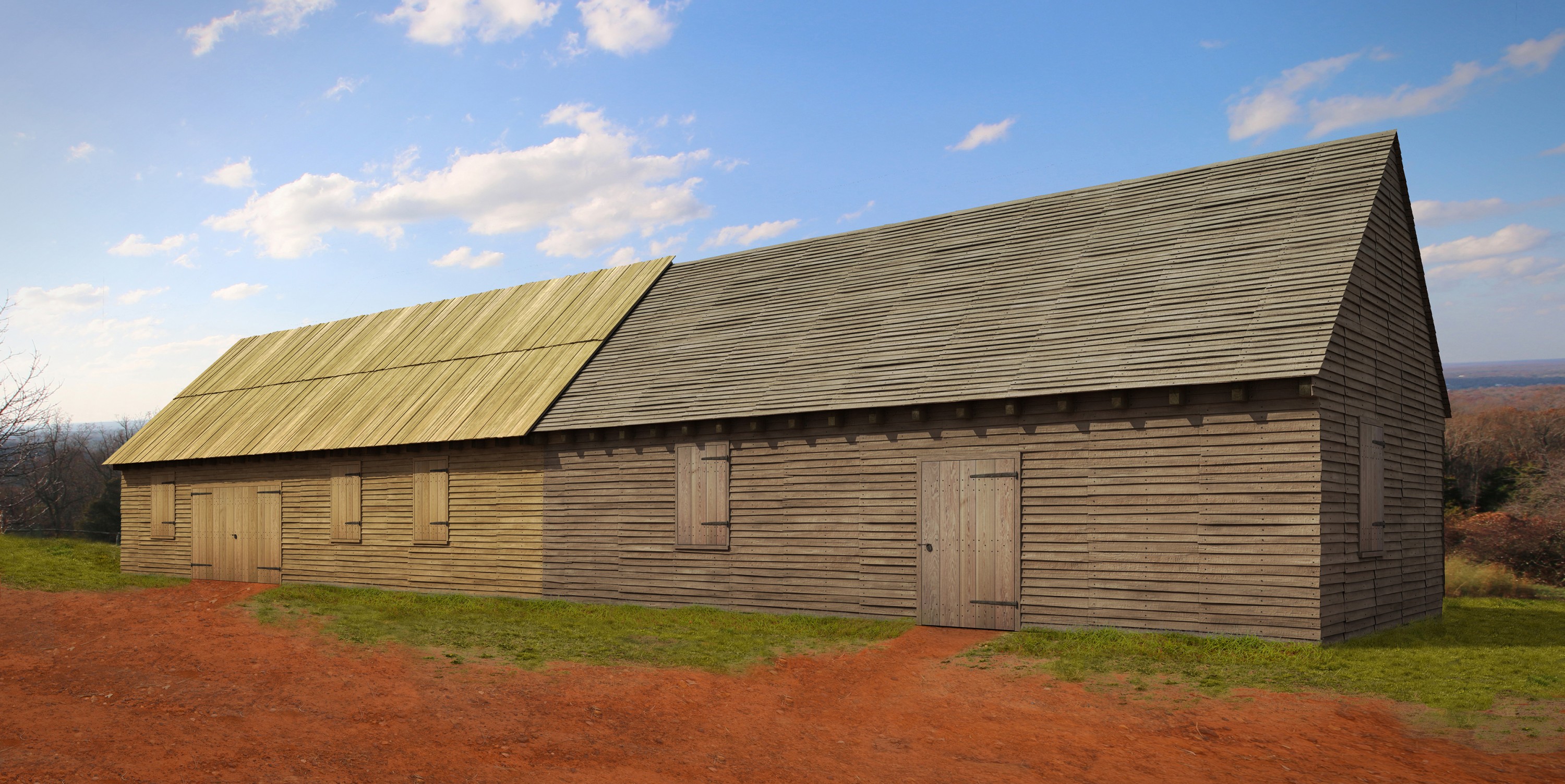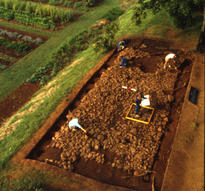Labeled by Jefferson as "D. is a smith and nailer's shop" in the 1796 Mutual Assurance Plat. A larger nailery (lighter colored building on the left) was added to expand to Monticello's nail-making operations.

Digital model of a Nailery (lighter colored building on the left) and Blacksmith's Shop (darker colored building on the right). Image by Rendersphere, LLC

Smith’s shop, aerial view of excavation.
Erected around 1793, this 37 x 18-foot structure with “walls & roof of wood” initially functioned as “a smith and nailer’s shop.” Working over forges and anvils, enslaved and hired blacksmiths shoed horses, repaired the metal parts of plows and hoes, replaced gun parts, and made the iron portions of the carriages that Jefferson designed. Neighboring farmers brought work to the shop as well, and enslaved blacksmiths received a percentage of the profits of their labor. In 1794, Jefferson added a nail-making operation to the smith’s shop. When Jefferson commissioned an adjacent “nailer’s addition,” nail-making moved next door in 1796. The smith’s shop was likely demolished around 1803.
Hired smiths:
- William Stewart, 1801–07
Enslaved smiths:
- George Granger, Jr. (1759-1799), 1794–1799
- Isaac Granger Jefferson (1775–1846), 1795
- Moses Hern (1779–after 1832), 1799–1819
- Joseph Fossett (1780–1858), 1800–1827
Videos about blacksmithing

A Blacksmith's Tools

A blacksmith's materials

Firing up the forge
